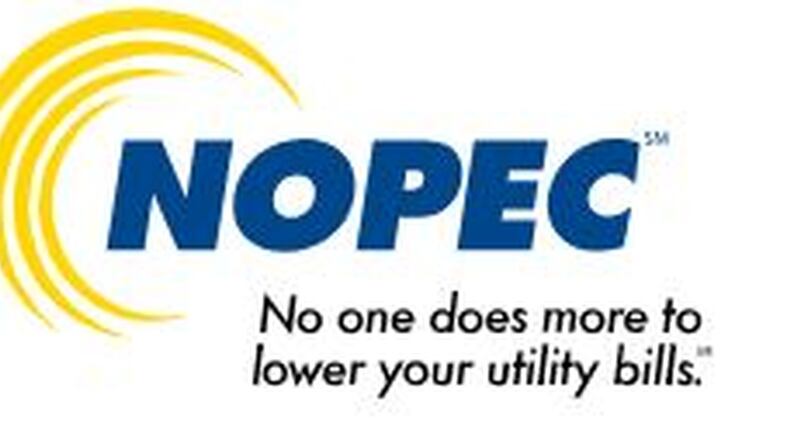“What we were trying to do with NOPEC and through use of aggregation was to find the lowest-cost energy for the people of the community,” City Commission David Estrop says. “It’s incumbent upon us to do everything we can to help keep costs down for the people of Springfield. We are continuing to try and find ways to help.”
NOPEC is an “aggregator” that combines buying power to enable cities, townships or counties to join with a goal of curbing utility costs for customers. Springfield joined the service in 2018, and city residents were automatically enrolled unless they chose to opt out of the service.
The Springfield consumers who participated were hoping to take advantage of NOPEC’s ability to negotiate and secure price adjustments to save them money.
With utility costs on the rise and predicted to continue increasing, customers were counting on pocketing some savings in coming months. But because energy costs are currently in such turmoil, NOPEC is now notifying those enrolled that they are returning customer billing to the consumers original utility companies, which is Ohio Edison in this area.
According to Dave Jankowski, chief marketing and communications officer for NOPEC, approximately 12,700 small businesses and residences in Springfield are affected by the decision.
NOPEC asserts that they are not the only service taking such steps. Across Ohio, approximately 40 other aggregations have made the same move, in all returning about 100,000 customers to their original utility providers, according to information NOPEC has provided.
Jankowski admits when prices started to skyrocket, NOPEC was experiencing a dramatic disenrollment by customers. He maintains the choice to convert all customers back to their original utility provider is a proactive measure to save customers money while utility costs are so unpredictable.
NOPEC notes that the cost of energy had been driven up by prices in Europe, the war in Ukraine, supply chain issues and other outside forces. Hotter weather across the country this summer drove up prices further.
While NOPEC cannot currently offer competitive pricing, they forecast “a more level playing field” that will enable them to automatically re-enroll customers back into the NOPEC program in spring of 2023 once prices have stabilized. However, their proposal to do so is awaiting approval from Public Utilities Commission of Ohio.
Consumers who received the notification from NOPEC do not need to take any action at this point. Their account will be automatically transferred back to their original utility service. Depending on each customer’s meter read date, it may take one to two billing cycles for the transfer to take effect. Customers may also receive a notice from their utility confirming the change.
Some are wondering if NOPEC, which has been providing aggregate services in Ohio since 2001, needs to answer more questions about their decision.
When NOPEC notified thousands of northern Ohio customers of this same change in August, PUCO raised questions and demanded justification for the choice to temporarily switch customers back to their original utility. Matt Schilling, director of the Office of Public Affairs of PUCO, says questions were asked about whether the NOPEC decision to not match the standard service offer pricing was due to legal constraints, economic choices or other factors.
PUCO asked for the timeframe, factors and reasoning related to NOPEC’s decision to undertake the “NOPEC Customer Drop.” NOPEC is essentially facing a “no confidence” notice from PUCO and possible decertification as an aggregation provider in Ohio.
PUCO also raised concerns about the impact of this unprecedented switch impacting hundreds of thousands of Ohio households, and expressed fears that another consequence will be further unsettlement in Ohio utility rates, exacerbating cost concerns for consumers.
NOPEC’s response to PUCO’s challenges is currently under review. The company continues to operate in the state and plans to do so in 2023. Schilling says a comment period was extended in the dispute, and PUCO is inviting feedback from other suppliers, consumer advocate organizations, municipalities and consumers. Online comments must reference Case #00-2317-EL-GAG and can be offered on the website https://puco.ohio.gov/help-center/contact-us.
Schilling predicts former NOPEC participants will see their bills reduced in the short-term as residents are returned to their original service provider. Jankowski also said consumers will be best served by sticking with original utility providers for now.
Schilling and Jankowski say consumers can also consider looking for a different aggregate provider, but both warn to be cautious in doing so. Schilling stresses people should “remember you will be entering a contract and be sure you understand the provisions of the provider you choose.” Jankowski advises “beware of sales tactics being used in retail offers that seem too good to be true. They probably are.”
PUCO offers information to help customers know what questions to ask.” Visit https://energychoice.ohio.gov to compare aggregate providers.
Those who wish to remove themselves from aggregation sales pitches and maintain direct billing from their original service provider can also submit their information on the PUCO site to ensure they are not unknowingly or unwillingly enrolled in an aggregate program.
About the Author
